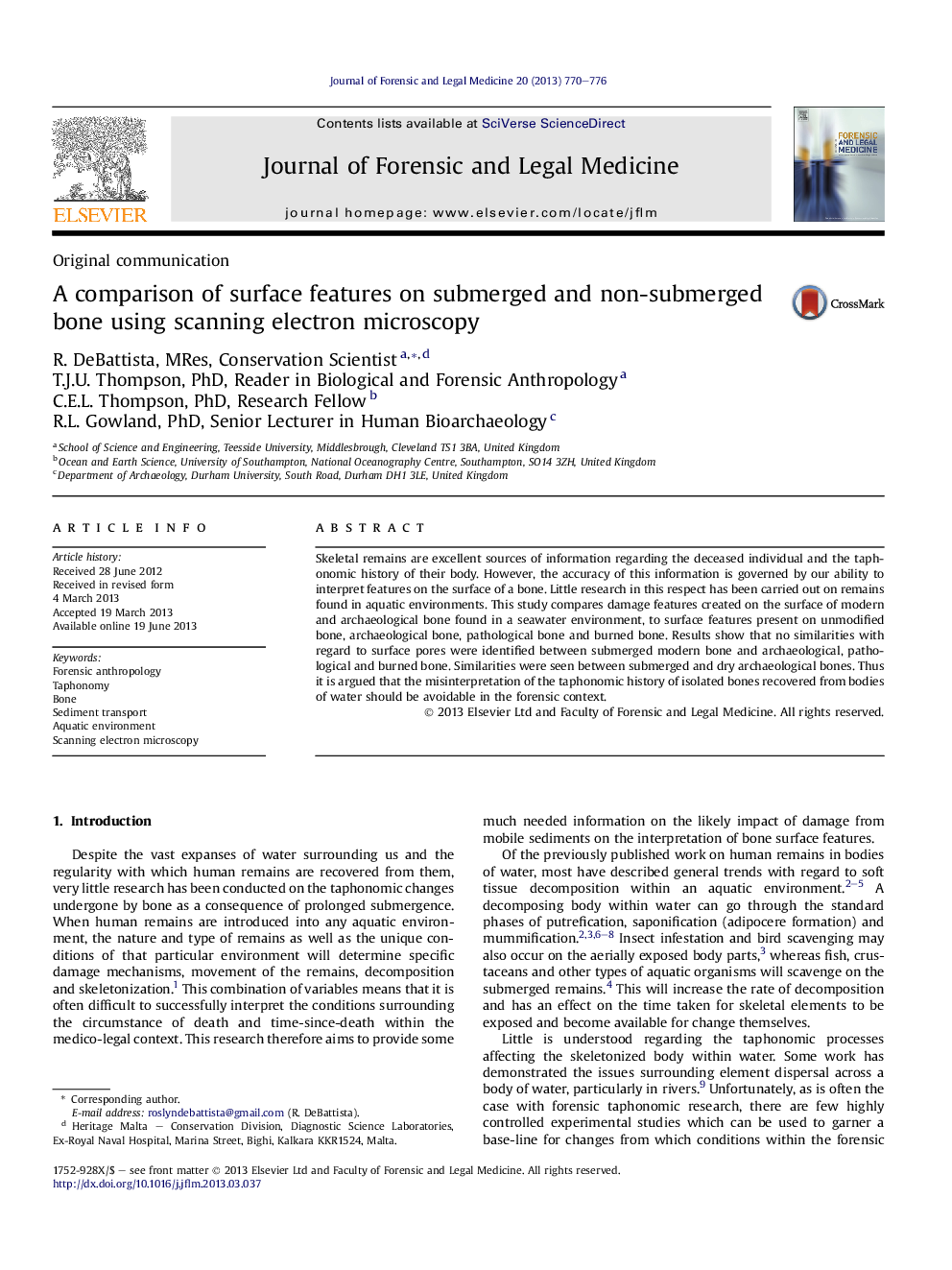| Article ID | Journal | Published Year | Pages | File Type |
|---|---|---|---|---|
| 102092 | Journal of Forensic and Legal Medicine | 2013 | 7 Pages |
Skeletal remains are excellent sources of information regarding the deceased individual and the taphonomic history of their body. However, the accuracy of this information is governed by our ability to interpret features on the surface of a bone. Little research in this respect has been carried out on remains found in aquatic environments. This study compares damage features created on the surface of modern and archaeological bone found in a seawater environment, to surface features present on unmodified bone, archaeological bone, pathological bone and burned bone. Results show that no similarities with regard to surface pores were identified between submerged modern bone and archaeological, pathological and burned bone. Similarities were seen between submerged and dry archaeological bones. Thus it is argued that the misinterpretation of the taphonomic history of isolated bones recovered from bodies of water should be avoidable in the forensic context.
